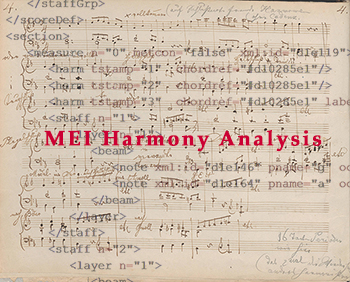Digital Music Analysis with Music Encoding Initiative (MEI) Techniques Using Anton Bruckner’s Compositional Studies as an Example

This interdisciplinary project seeks to explore the extent to which the methods of XML technology can be fruitfully employed in the field of musicology, using the automated analysis of harmonic structures as an example. Besides computer-based methods and tools of harmonic analysis, the project will also investigate new visualisation concepts that allow large amounts of musical data to be analyzed and searched interactively for harmonic structures and variants, with the results displayed upon the computer screen. The musicological relevance of the concepts developed will be tested and verified by analyzing Anton Bruckner’s compositional studies. Bruckner’s “Kitzler Study Book” will be examined using these cutting-edge methods. Its complete contents will be transcribed using the Music Encoding Initiative (XML-MEI) coding format and linked bar by bar with the existing digitalization of the manu-script. The music will not be analyzed using audio files (digitally stored live music), but using XML-coded “textualised” music (musical notation).
The “Kitzler Study Book”, which Bruckner produced while studying under the conductor and cellist Otto Kitzler (1834-1915) in Linz, is particularly suitable for this purpose as it contains numerous harmonic studies covering a great variety of harmonic developments, for the most part independent of any larger musical context. Accordingly, they present a large range of different content.
The automated analysis of larger musical corpora could lead to a paradigmatic shift within historical musicology: while traditional methods would not become redundant, the objectively generated findings – which would need to be reviewed critically – could raise new questions and issues. The viability of this innovative enterprise in computer-based music analysis has already been demonstrated on a theoretical level. Here, its practical implementation will be tested for the first time, exploring the limits of what is feasible.
The two-years project is financially supported by the Digital Humanities funding program GO! DIGITAL of the Austrian Academy of Sciences.